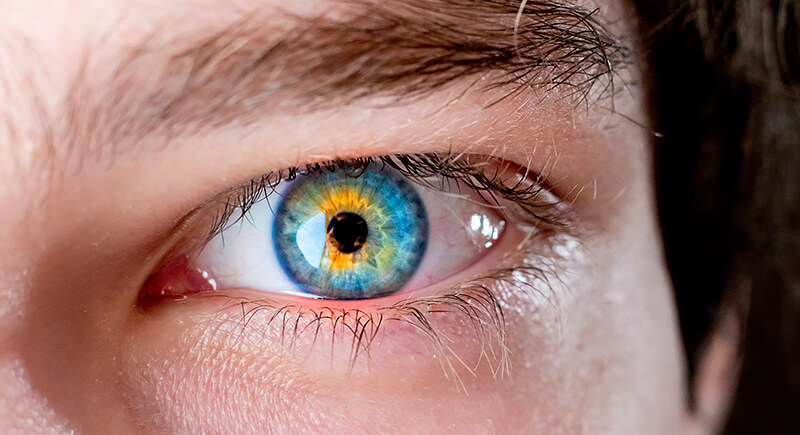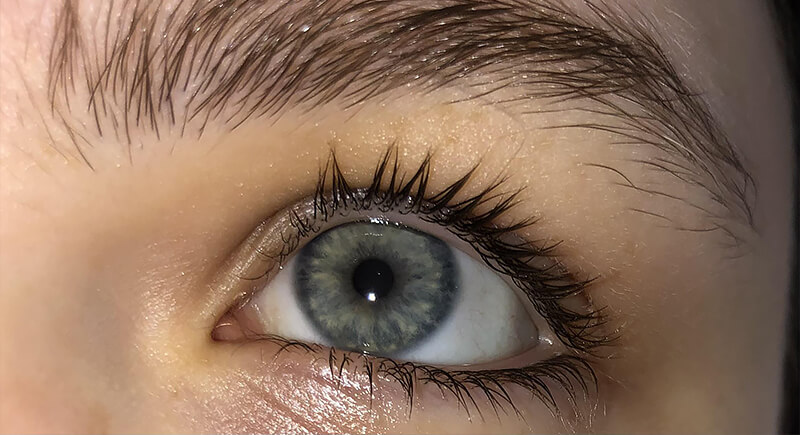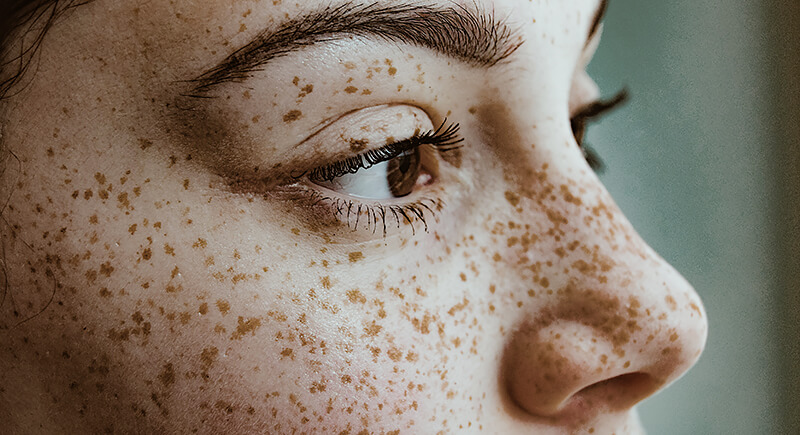Some traits hide in our DNA like little surprises and shape people in ways most of us never think about. They might change how colors appear, how much rest someone needs, or even how many eyelashes they grow. Scientists love studying these oddities, and the rest of us can just enjoy how unpredictable human genetics can be.
Tetrachromacy

A very small percentage of women have four types of cone cells in their eyes instead of the usual three. This allows them to see a broader range of colors than most people ever notice. Researchers believe this quirk will enable them to detect subtle differences in hues on fabrics, fruits, and artwork.
Myostatin-Related Muscle Growth

When a mutation interferes with myostatin production, the usual brakes on muscle growth don’t work. Children born with this change often develop unusual strength early in life. There are no harmful side effects known so far. Athletes and researchers find the mutation fascinating because it offers clues about muscle-building potential.
Left-Handedness

Roughly 10% of the population favors the left hand. Neuroscientists note differences in brain hemisphere dominance among left-handers, which sometimes gives them an edge in certain sports or creative tasks. Historical records show that famous figures, such as Leonardo da Vinci and Bill Gates, were left-handed.
Highly Superior Autobiographical Memory

Some people can tell you what they ate for lunch on a random day 20 years ago, down to the smallest detail. This ability, called HSAM, has been examined through brain imaging and interviews since the early 2000s. It’s not a photographic memory but a vivid, almost effortless recall of personal history.
Lactase Persistence

For many, milkshakes stop agreeing with them after childhood. Others keep producing lactase, the enzyme that breaks down lactose, well into adulthood. Anthropologists link this trait to ancient communities that relied on dairy for nutrition, especially in parts of Europe and Africa.
Super Sleeplessness

A mother and daughter made headlines in 2009 when researchers discovered they were perfectly healthy on only four to six hours of sleep a night. Tests revealed a variation in the DEC2 gene, which also produced similar results in lab animals.
Super-Dense Bones

Certain families carry a change in the LRP5 gene, which strengthens bone tissue beyond typical density levels. Doctors discovered it when investigating patients who seemed unusually resistant to fractures. In one case, a car accident victim with this mutation walked away without a single break.
Absolute Pitch

Some people can identify or reproduce any musical note without a reference tone, a rare ability known as absolute pitch. Studies show a genetic link, but early exposure to music seems to enhance it. Many with absolute pitch can recall the key of a doorbell or the hum of an appliance.
Cleft Chin

A cleft chin forms when the lower jawbone and muscles fuse in a slightly different way during development. Genetics strongly influence this trait, which often runs in families and appears in both men and women. Classic Hollywood actors were usually cast for their pronounced chins to make the feature iconic.
High Altitude Adaptation

Living thousands of feet above sea level isn’t easy, yet populations in the Andes and on the Tibetan Plateau do so with ease. Genetic studies revealed traits like higher red blood cell counts and adaptations in the EPAS1 gene, which controls oxygen use. These adaptations developed over generations.
Distichiasis

Elizabeth Taylor’s striking eyes were partly thanks to a condition called distichiasis, which produces two rows of eyelashes. Some people never notice any issues, while others need eye care to prevent irritation. Ophthalmologists often document such cases to learn more about how specific genes influence eyelid development long before birth.
Marfan Syndrome Flexibility

Marfan syndrome affects connective tissues, often resulting in unusually long limbs and hyperflexible joints. Some with mild forms use this flexibility in athletics or performing arts, while others require monitoring for heart conditions associated with the syndrome. Scientists trace the condition to mutations in the FBN1 gene.
Redhead Pain Response

The same MC1R gene that creates red hair also affects how some people feel pain and respond to anesthesia. Studies show redheads may need higher doses during surgery, and they sometimes handle specific kinds of pain differently. It’s a fascinating example of how a visible trait can hint at hidden biological differences.
Dimples

Facial dimples appear when variations in cheek muscle structure create small indentations during a smile. Genetic inheritance plays a significant role, though some dimples fade as people age. In many cultures, dimples are viewed fondly, often associated with friendliness or charisma.
Freckles

Freckles form when melanin clusters in the skin, often triggered by sunlight. Variations in the MC1R gene influence their appearance. Dermatologists emphasize that freckles themselves aren’t harmful, though they highlight sun sensitivity. Many people embrace them as a natural feature that adds personality to their look.